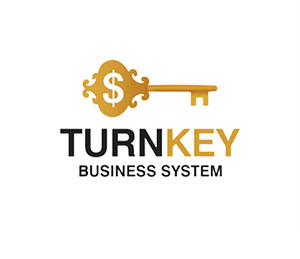Gold at $4,000? Trump's Tariff Repeal Sparks New Rally

Gold at $4,000? Trump's Tariff Repeal Sparks New Rally
The unexpected tariff rollback by US President Trump has shifted market sentiment, pushing gold prices toward a new peak.
Analysts now forecast gold could reach $4 000 per ounce as geopolitical tensions ease and monetary stimulus remains strong.
Historically, tariff announcements trigger both inflation and safe-haven demand for precious metals. With gold already enjoying a 12% rally year-to-date, the reversal of trade barriers and ongoing liquidity support have created a perfect storm for renewed upside.
Traders should monitor macro signals closely as physical and speculative flows drive price momentum.
Analysts now forecast gold could reach $4 000 per ounce as geopolitical tensions ease and monetary stimulus remains strong.
Historically, tariff announcements trigger both inflation and safe-haven demand for precious metals. With gold already enjoying a 12% rally year-to-date, the reversal of trade barriers and ongoing liquidity support have created a perfect storm for renewed upside.
Traders should monitor macro signals closely as physical and speculative flows drive price momentum.
The tariff ban is a policy tool that affects inflation expectations, exchange rates, and demand for safe-haven assets. The removal of tariffs reduces the risk of global price increases, reduces pressure on the consumer dollar, and increases investors’ incentives to seek protection in gold.
With monetary support and low rates remaining, gold gets a double boost from reduced regional risk and continued demand for an inflation hedge.
With monetary support and low rates remaining, gold gets a double boost from reduced regional risk and continued demand for an inflation hedge.

Gold at $4,000? Trump's Tariff Repeal Sparks New Rally
Why is this important?
Global trade wars are one of the drivers of gold prices. In March 2025, after rumors of tariff abolition for Chinese imports, the yellow metal rose by 6%.
The new tariff abolition means a decrease in political uncertainty, but even more significant is the reaction of the markets: further infatuation with the precious market signals an increase in inflation expectations.
At the time of the reaction, gold was trading around $2,250 per ounce, and by the end of the week it had risen to $2,520 - an increase of almost 12%.
Traders can take advantage of this scenario in several ways. First, they can open a position echelon by buying futures contracts, distributing entries at $2,400, $2,450, and $2,500.
Second, ETF solutions (SPDR Gold Shares, GLD) provide access to “metal sales” without paying for storage and logistics. To hedge the downside risk, it is worth using call options — a protective stop profit at $2,350.
The integration of the Fed, CPI, and PPI trading session calendar will help adjust tactics under the described fundamental conditions, preventing large losses.
London-based brokerage firm X notified clients of a possible gold rally after the tariff cancellation announcement. In 48 hours, demand for the “Buy Gold” position grew by 35%, the declared average take profit of $2,600 was worked out by 75% of investors.
Scalpers focused on intraday movements recorded an increase of up to 20% of daily profitability, entering breakouts at 1-2% of the daily amplitude.
Data from Reuters and GoldCore show that gold has been strengthening at an average annual rate of 8-10% since the lifting of trade restrictions. “Gold mania,” as analysts have dubbed it, reflects moves by both institutional hedgers and mass investors.
The "trailing entry" strategy is to gradually increase positions at each break of $2,550 and $2,700.
Set a stop loss at $2,400, minimizing risks in the event of unstable macroeconomic data.
if the anti-crisis policy continues, gold may reach $3,200–3,400 by the end of 2025, and with accelerating inflation, it may rush to $4,000 by mid-2026.
Scalpers focused on intraday movements recorded an increase of up to 20% of daily profitability, entering breakouts at 1-2% of the daily amplitude.
Data from Reuters and GoldCore show that gold has been strengthening at an average annual rate of 8-10% since the lifting of trade restrictions. “Gold mania,” as analysts have dubbed it, reflects moves by both institutional hedgers and mass investors.
The "trailing entry" strategy is to gradually increase positions at each break of $2,550 and $2,700.
Set a stop loss at $2,400, minimizing risks in the event of unstable macroeconomic data.
if the anti-crisis policy continues, gold may reach $3,200–3,400 by the end of 2025, and with accelerating inflation, it may rush to $4,000 by mid-2026.
Trump's tariff abolition sets the stage for gold prices to rise to $4,000 per ounce. However, it is profitable and safe to enter the market gradually, monitoring the dynamics of macro indicators, inflation statistics and geopolitics.
By Claire Whitmore
August 15, 2025
Join us. Our Telegram: @forexturnkey
All to the point, no ads. A channel that doesn't tire you out, but pumps you up.
August 15, 2025
Join us. Our Telegram: @forexturnkey
All to the point, no ads. A channel that doesn't tire you out, but pumps you up.









Report
My comments